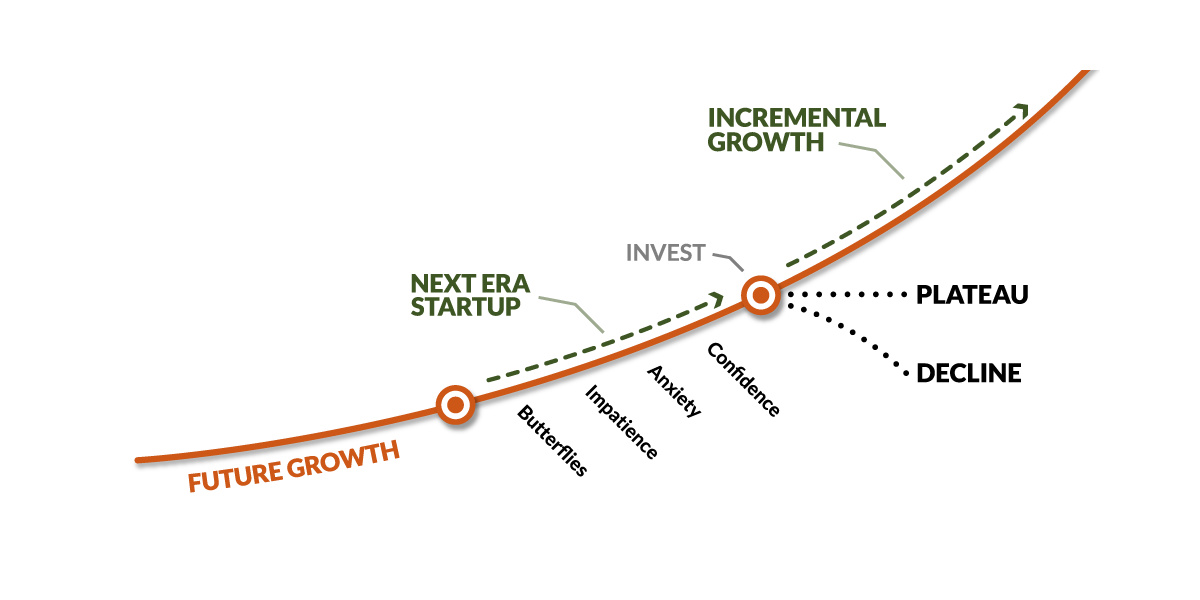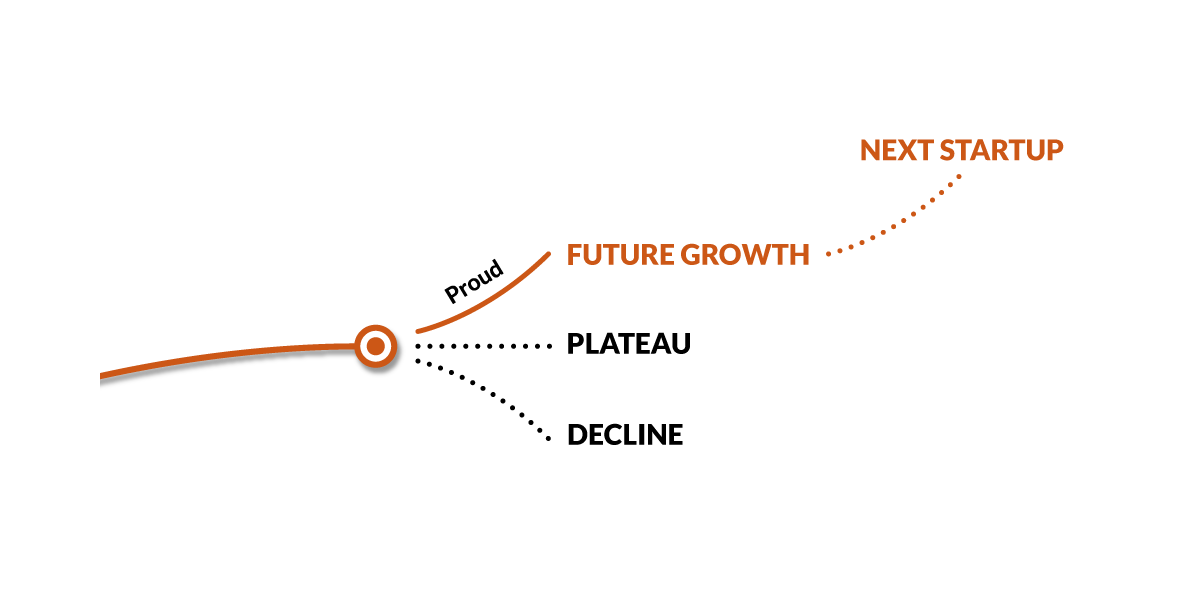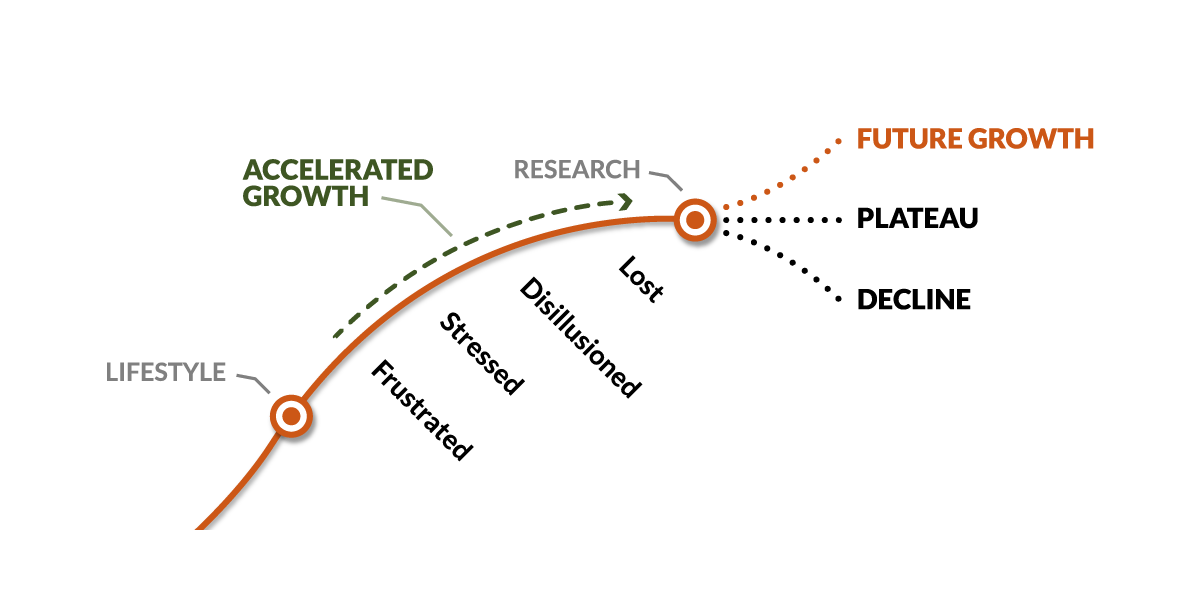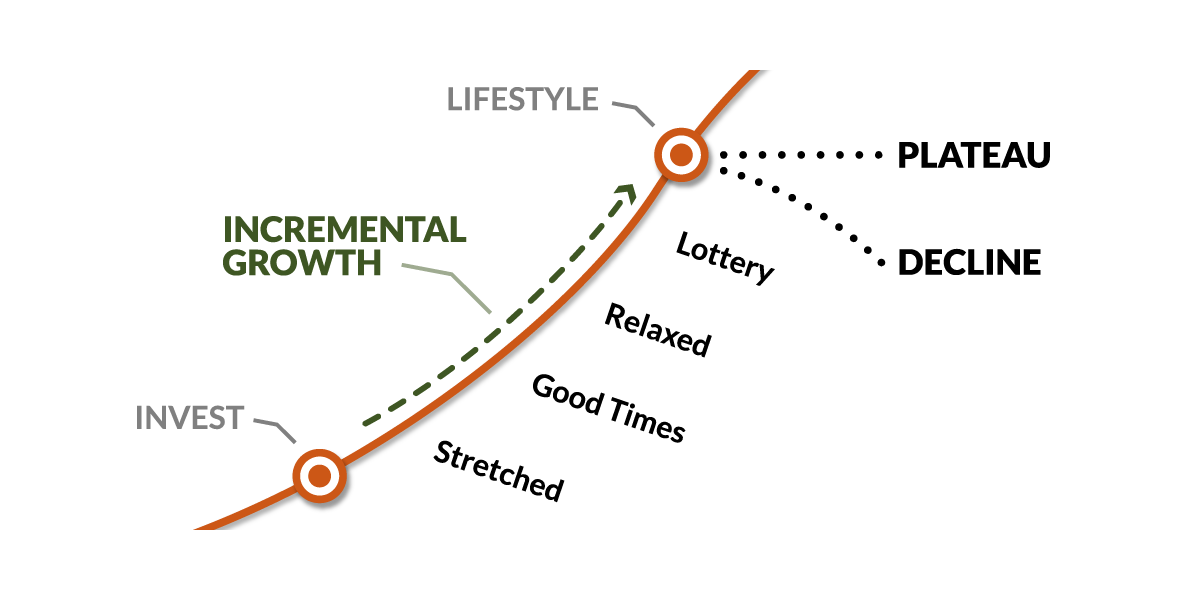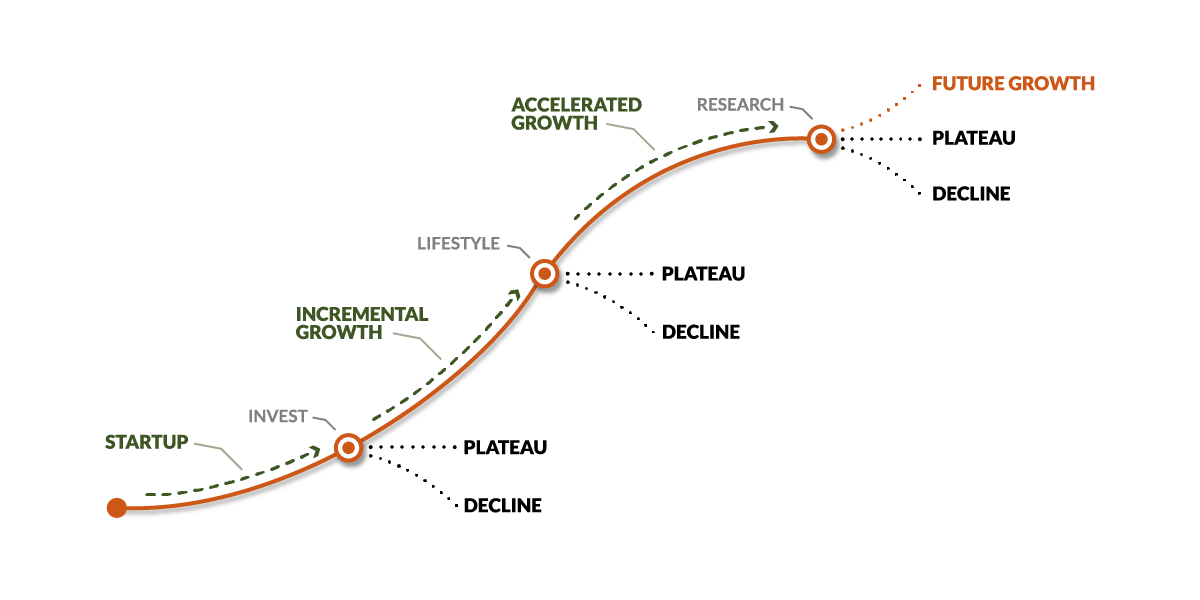The Startup Phase of the Business Cycle & Its Useful 4 Emotional Stages
In entrepreneurship, understanding the business cycle guides leaders through to startup success. This blog aims to dissect the startup phase, specifically focusing on what it feels like as the entrepreneur moves through them. Each stage within the startup phase has unique behaviors and requires specific actions to effectively harness their potential and progress. During the startup phase, Entrepreneurs spend time and money with more going out than what is coming in – this drives the behaviors and their evolution.
Later, we explore how established middle-market companies find themselves going through the next iteration of the startup phase.
The ‘Butterflies’ Stage: Excitement Tinged with Uncertainty
Signature Behaviors
The ‘butterflies’ stage marks the maiden voyage of a startup. Entrepreneurs in this phase, brimming with optimism and excitement yet apprehensive about the road ahead, are fiercely focused on their vision with an occasional challenge to delegate effectively. They focus intensely, and their conduct is perceived as extremely desperate to prosper their business.
Decision Making
It is quick, often by ‘gut feel,’ acting with confidence and minimum data with a bias towards action to achieve the vision. They often underestimate the effort required. They can be intense and focus on multiple projects at a time, missing details and with blind faith that everything will work out.
Action Plan for Progress Along the Cycle
To navigate this stage, entrepreneurs should:
- Set realistic expectations while maintaining strong ambition.
- Use strategic planning to build a clear roadmap toward their vision and break down the startup phase into small steps enabling momentum.
- Begin building a competent team and assign responsibilities commensurate with their abilities. They should also create a skilled team of external advisors to keep momentum.
Example: Gourmet Foods Company
Gourmet Foods, a boutique food distributor, effectively managed this delicate phase. They conducted extensive market research, created niches in several upscale markets, and formed a goal-oriented team to determine which would gather traction first.
The ‘Impatience’ Stage: The Race for Momentum
Signature Behaviors
As a company moves from the ‘Butterflies’ stage into implementation. Often this stage is characterized by a great sense of impatience and feelings of momentum, as there is much to do!. Often this frantic behavior is created by an extensive to-do list. There is much to do! From getting the company set up, the bank accounts established and seeing customers or fitting out a location to attract them. Risks taken and investments made are in hope at a frantic pace and increasingly dispersed over time.
Decision Making
Decision making remains quick, but can become scattered as owners and employees alike over-promise as they underestimate the effort required. Urgency builds slowly at first as they try to get everything done. Cash and time continue to be spent to gain revenue traction.
Action Plan for Progress
To tame this impatience, leaders should:
- Be focused on the specific activities that will generate revenue in the future. Impatience often drives activities wide as the separation and impatience build.
- Have a plan and work the plan. Learn from what works, focus on these, and try everything simultaneously.
- Encourage an open communication culture emphasizing feedback from consumers and team members.
Example: Interior Furnishings Company
An office furniture retailer offers a compelling portrait of managing the impatience phase. They emphasized sustainable growth, one item sale at a time, building customer confidence that they could deliver when promised and that their products were of the required quality and arrived without damage. They integrated customer feedback into their products for continuous improvement.
The ‘Anxiety’ Stage: Tackling Fears and Doubts
Signature Behaviors
As impatience builds, this becomes bubbling anxiety, characterized by self-doubt and fear of failure. These feelings often stifle progress. This phase may compel entrepreneurs to be risk-averse, question their capabilities, and often leads to neglecting their health and well-being. Frequently the owner explores their decision options, business model, market, and why they have yet to have the success they dreamed about when starting the business.
The business is at the cusp of a key tipping point. The business owner will either become confident in their business, or resign to failure. Some young organizations pivot at this point and retune their business model and effectively restart their business.
Decision Making
It starts to change depending on the decision in front of them. Cashflow has become tight with the growing angst that can stall spending as enough revenue has yet to kick in.
At this stage, a business can stall as it feels appropriate not to spend any more until it starts improving. If the stall is prolonged, the company will initially plateau and decline to close.
Action Plan for Progress
To address these concerns, leaders must:
- Be self-honest. Is there demand in the form, or is the concept new and too out there for most?
- Build the business infrastructure required to support the next phase of business growth.
- Cultivate a balanced attitude, viewing setbacks as stepping stones for learning.
- ‘Act as if’ they are successful, persevere and keep focused. Set a deadline for the business to respond.
- Monitor stress levels, maintain work-life balance, and prioritize self-care, including expressing their feelings.
Example: Green Cleaning Solutions
Green Cleaning Solutions, a boutique cleaning service, focused on educating its target market on why they should spend a little more by using their alternative to the traditional cleaning approaches. They leveraged industry partnerships, embracing learning from how people reacted to their marketing messages. They focused their marketing activities on those companies that wanted their suppliers and service vendors to help them be green.
The ‘Confidence’ Stage: Capitalizing on Momentum
Signature Behaviors
During the anxious stage, there is a tipping point where the entrepreneur becomes confident and can see that the business and its model will be successful and continue to gather momentum and stability. In addition to confidence, a sense of relief that there is a future for the business.
Investments at this stage are made confidently, whereas before this stage, decisions and investments were made with hope.
Decision Making
Most of the decision-making at this stage focuses on investments, such as hiring people, extending a lease, and buying more stock. The mistake often made is to focus on the immediate term rather than review the business plan or consider what it requires beyond tomorrow.
Action Plan for Progress
In this phase, entrepreneurs ideally:
- Review their plans and what investments are required for sustainable, predictable growth.
- Prepare for a new frenetic activity phase caused by the growth investments.
- Reconnect to the vision, celebrate milestones to boost team morale, and pave the path for future success.
Example: Pet Care Services
Pet Care Services is a small pet care and grooming service with 1 location. The business was set up as Pet owners increasingly wanted their pets to look good but lacked the time or the skill to achieve the desired look. They needed their facilities to be busy 80% of the time to start making money. During the previous phase of anxiousness, they researched their customer base issue. They realized they could get more frequent appointments and stronger utilization if they invested in a pick-up and drop-off facility. They initially rented a van, and as word got around, they could see that they could easily keep the grooming facility fully engaged. They invested in more staff, and their first leased van was outfitted to allow easy and safe transportation of their customer’s treasured pets.
Conclusion
The best leaders can recognize the emotional undercurrents that such a journey brings. They learn to recognize the initial butterflies, intermittent anxiety, impatience, confidence surges, and their team’s performance and decisions during each phase.
Understanding that the progressive stages within the startup phase of the business cycle are normal and that understanding them allows them to drive the business rather than the business driving them.
The business cycle offers an invaluable analytical tool, offering insights and targeted strategies to cope with each stage, effectively helping leaders channel their emotional responses into tangible business growth. By practicing these strategies, entrepreneurs from diverse sectors, especially at key tipping points, can process and employ their moving experience to accomplish sustained business success in the long run.
Related Articles
What You Need To Know About Mature Companies Suddenly Revisiting Startup
Throughout their history, organizations progress through various phases and…
0 Comments13 Minutes
From Lost To Proud: Mastering More Effective Business Growth
After successfully navigating the challenges of the Accelerated Growth phase,…
0 Comments8 Minutes
The Hidden Pitfalls In Accelerated Growth You’ll Actually Experience
Following on from the tipping point at the Lottery stage of the Incremental…
0 Comments20 Minutes
How To Navigate The Surprisingly Awesome Stages Of Incremental Growth
In the world of business, growth is essential for long-term success. Every…
0 Comments19 Minutes
Growth or Decline: Timing Your Business Cycle Strategy Makes the Difference
There are three cycles, often collapsed into a single cycle, that every…
0 Comments10 Minutes

